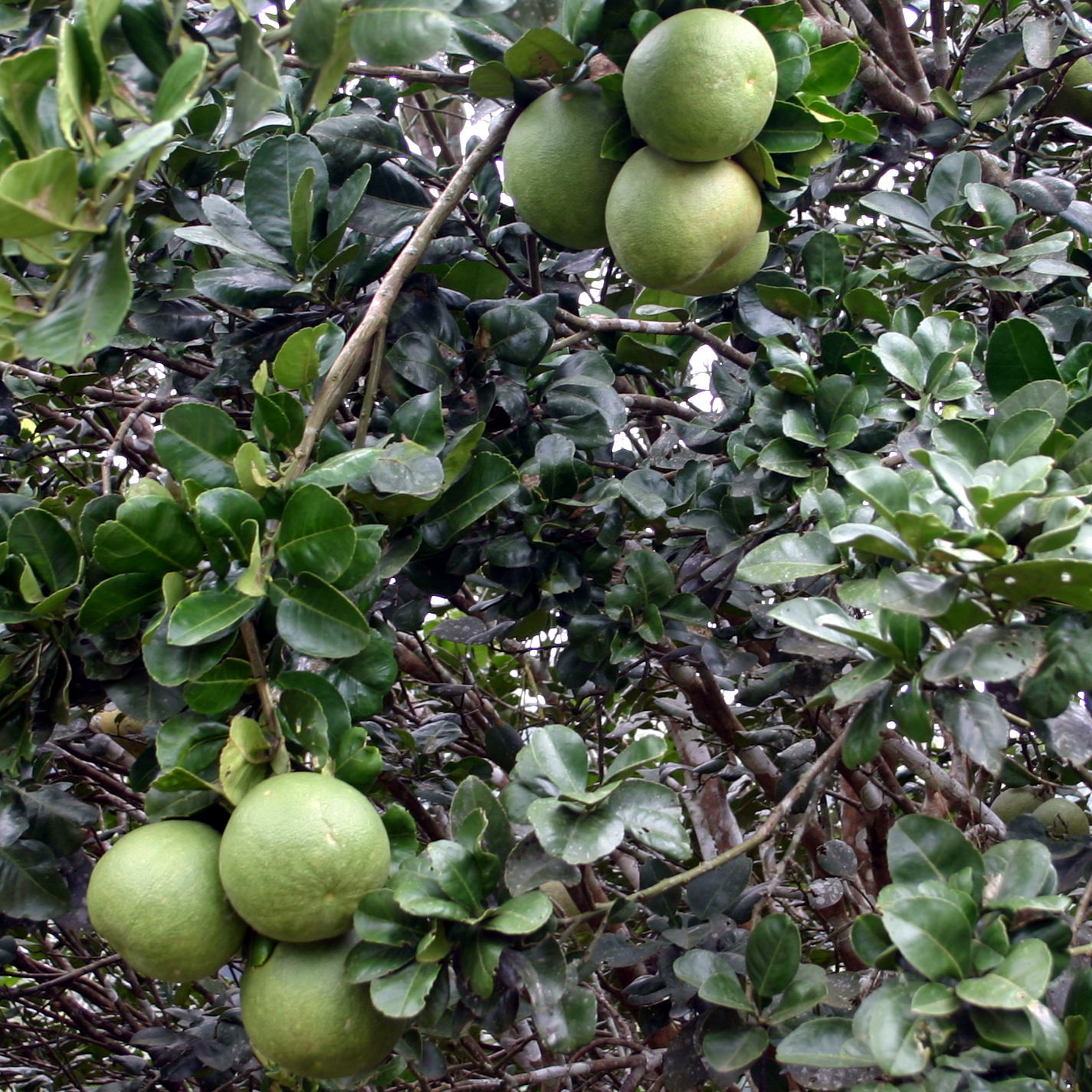
It sometimes seems that pomelos are everywhere in Thailand. But then, a fruit this big is quite difficult to hide. The pomelo is a very large citrus fruit, perhaps the largest in the world, and its scientific name Citrus grandis suits it well. The fruit can reach the size of a football (soccer ball for you Americans) and is pale green like an unripe orange. It has a very thick skin, inside of which is a segmented flesh exactly like an orange or other citrus fruit, only much larger. The taste is quite similar to grapefruit, only without the sourness and bitterness. Pomelo is quite easy to eat, not only because of its mild citrus taste, but it is also less messy than most other citrus fruits. The membranes holding in the juices seem to be just a tiny bit thicker than other citrus, so it stays intact when being handled. This helps to explain why Thais like to eat pomelos and never juice them, while preferring to drink orange juice and rarely eating the fruit. In fact, I’ve never seen pomelo juice for sale. It may be that the juice quickly becomes bitter, which happens to most fresh citrus juices without added stabilizers. In addition to eating the plain fresh fruit, pomelos are also used in spicy salads.
The pomelo is indeed the ancestor of the grapefruit. In 1683, Captain Shaddock, who commanded a ship for the East India Company, bought the seeds from the East Indies to Barbados in the West Indies. How the pomelo evolved into the grapefruit isn’t clear, but I’ll take the taste of pomelo over grapefruit any day. Pomelo is generally available all year round, but comes into a high season around October. In the hills around Chiang Mai are some large orchards where you can see pomelo trees. Once you see pomelos growing in large clusters on the tree, you can understand why the Europeans came to call their descendants grapefruit.